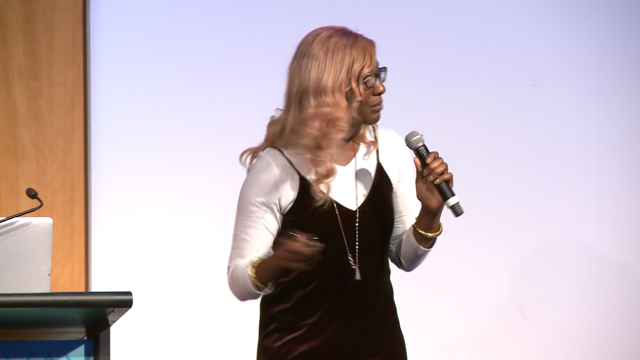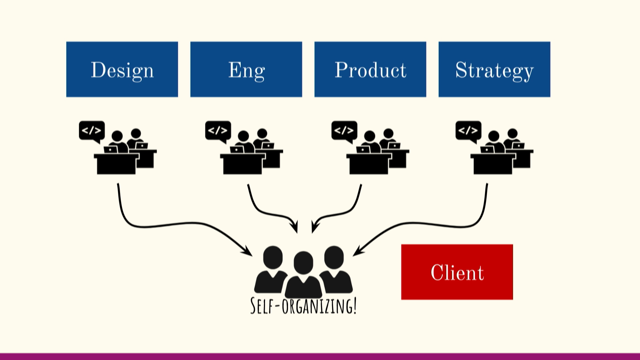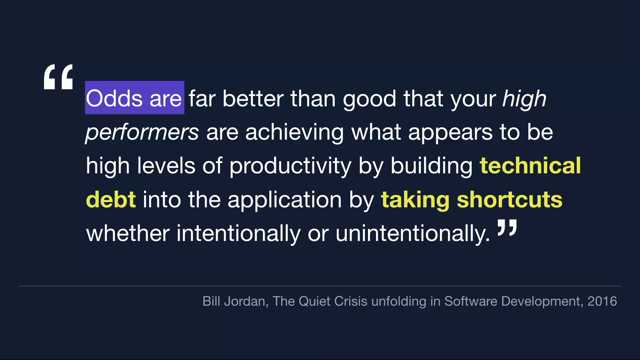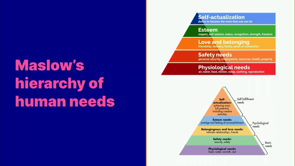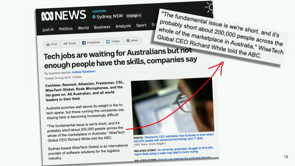
(upbeat music) - Right, so let's talk about sex.
Who's ready? Okay so more specifically, and more honestly, we're gonna talk a little bit about gender. So did I see there weren't very many hands here, of people who are working in diversity and inclusion space? Is that right? Could you just put those hands back up again. Oh actually, okay there is quite a few, that's good. And by the end of this talk, hopefully there might be a few more, who at least are gonna get involved in it.
Because it's important, and you're gonna find out why. So we're gonna talk about sex.
I know there's children in the room.
Now what happened, how did we do that.
I apologise, we're talking about gender.
But I was just wanting to grab your attention a little bit really.
So we're talking about gender in technology specifically. The world of technology.
Which is incredibly diverse.
It's huge, we know it's diverse.
We're building these technology products and services for a world of diversity.
In Australia it looks kinda something like this. We've got a split of of roughly about half men and women. However, the landscape in technology, the people who are building that technology, looks a bit more like this.
Spot the female basically.
So we're building all these products, they're being built, they're being designed. Mostly by a sea of one demographic.
Kinda looks a bit like this, or this, or this, I could go on all day.
This, them, him, those guys, these guys, you know. You kinda get the picture right? So the question then is why.
Why has this happened? Why is it like that? I have scratched my head about this for a very very long time, and I know why now, 'cause I've done some research. I've figured it out.
The fact is women do go into tech, but they leave. A lot of them leave.
Actually 56% of them leave at the midpoint of their career. Which is between seven and 10 years.
That's more than double the quit rate of men. More than than double the quit rate of men. Now at lot of people say, "Oh well, they go to have children".
No it's not the case, maybe about 20%.
But you don't leave an industry to have children. You might leave your job and go back, but you don't leave an industry.
We're talking about quitting, abandoning technology. So we have to wonder why that is.
Now it's not getting any better, that's the other thing. 'Cause we kinda think, well we're doing a lot about this right.
There's a lot of D&I stuff going on.
So why is it getting worse? Well this is why, this is why people leave, okay. It's getting worse, it's going down.
These are the reasons.
Not to have children.
There's a lot of data that tells us this stuff. You look it up, you'll find this.
These are the top three reasons why women leave technology, at the midpoint of their career.
So that's seven to 10 years in, they're not getting support form their managers. They can't progress upwards, they're stuck. And culture, culture is a real problem for women in tech. So included in culture is things like sexual harassment. Sadly it's in there, and it's more frequent than you realise.
But also that kinda bro culture, the frat house thing, poor culture.
Now there's another reason why this is really important. This was an article that came out not that long ago with the ABC.
Where Richard White, who's the global CEO of WiseTech, and they hire in their Sydney office, about 15 people a month, something like that. So big numbers, it's a $10 billion company, and what Richard says is that he reckons we're about 200,000 people short, at the moment in Australia, in technology, 200,000 people. And there's probably 40,000 people studying technology in Australia right now, in our universities. Deloitte did a report in 2018, that showed that there were gonna be another 100,000 jobs, technology jobs by 2023.
So these number don't add up.
We're seriously short of talent.
We're making it even harder for people to come into this country right now too.
The reasons why, will all be things that your probably, being in technology, you'll be aware of all these things. So the growth of AI, more data analytics, security of data, mobile application development, shift to the cloud, all these things are what's causing this growth in technology jobs.
But just think there's hardly any women.
We don't have enough people.
Half our population is made up of women.
We're missing something, we're missing something big.
So again, why are we facing this issue in 2019? So I'm gonna take you on a little journey here. And we'll get a bit of better understanding. Back in the 1940s and '50s, all of the computing was done by, almost exclusively by women.
It was seen as an almost menial support, administrative, clerical kind of role.
And it wasn't called programming at that point. The concept of programming didn't exist.
So all the actual computing was done by women. And then in the early '60s they became known as the computer girls, a lovely term. Now there wasn't actually a vocation, once the big mainframe, of computers were actually built, there wasn't a vocation, it was so new.
They didn't really know what they were looking for, and they had to scale up and hire people.
So they were just doing the standard kinda cognitive tests. So IBM decided to hire a couple of psychologists, these two guys, to create, and to do some research, and create a social profile, that they could just to go out and recruit from. So these two guys went away, and they did all this wonderful research, all psychology based.
Even though all these women were already doing the job, very competently, and had been for a very long time, they came up with this profile.
You read that.
So this then became the primary selection mechanism used by the industry, selecting for antisocial mathematically inclined males. I didn't make this up, this is true.
So therefore, antisocial mathematically inclined males, became over represented in the programmer population, unsurprisingly. And that in turn reinforced the popular perception that programmers ought to be male, antisocial, and mathematically inclined, and so on and so forth. This is what we started to look for, and this is what we got.
Based on that piece of research, that was published in 1966 by William Cannon and Dallas Perry, thank you very much. So this is what we ended up with basically. This is where the stereotype was born, that Lego then recreated some time later, as the programmer nerd that we see here.
And then in the '80s what happened, was games suddenly exploded on the scene, early '80s, marketed almost entirely towards boys. So by this time, women and girls, they couldn't see themselves in technology. There wasn't a place for them.
Technology just didn't exist for them any more. They didn't feel that they belonged in that environment, as you can see, these are real but scary.
So in 2019, this is a long time later, who have we been catering the technology environment towards? Who are we designing it for? When we think about IT companies, we think a bout technology companies.
We think about tech start-ups.
What do we do when we're building those environments for all our programmers.
We've got a cool tech company, but we're gonna create a tech division.
We're gonna create a software engineering department. Generally looks something likes this.
This is familiar to me, I see this a lot.
Or this on a bigger scale.
Or this, of course the obligatory ping pong table. Don't ever see, I don't think I've ever seen, a technology company that doesn't have one of these. Or if your lucky you might have a pool table as well. Maybe a dart board.
Arcade games, there popular these days in tech companies. I believe that's LinkedIn I think, their offices in Sydney. Craft beer anybody? Right this is familiar stuff, this is on all our careers websites.
This is what we tell the world.
We're hiring in tech, come and work here, we've got ping-pong, we've got pool, we've got craft beer, we've got a lot of wires hanging around.
(audience laugh) So what if they were a bot more like this? Oh that's nice, I'd work there.
Or this, oh that's nice.
These are coworking spaces, and coworking spaces it might surprise you to know, or more probably not, are made up of around 44% women. So these clever people that started to build these coworking spaces, they started designing for that demographic, because half of there people are women.
Let's go back to what we're giving people.
Just a reminder.
So let's go back again and think why is it, that women are walking out of tech half way through? (grunts) Okay, this is just scratching on the surface of one of these three things, this is the cultural bit. In fact it's even smaller within that culture piece, this is the environment, but you get the picture. So what's being done? More to the point, what's being done, or what's not working? So there's a huge amount of investment in diversity and inclusion.
Sorry I do pace a lot, I do this when I'm on the phone, I can't sit still, have to keep walking around. This is the only way I can do my steps in the day as well. So there's a huge amount of investment in technology D&I. Okay, about 35% of companies according to PWC. About 35% of technology companies have a D&I programme leader, at the C-suite or executive level.
Lots of investment and it's growing.
But, this is the worrying thing.
PWC also tell us that about 90% value or prioritise diversity and inclusion. Which sounds fantastic, but only 15% of them actually leverage D&I, into achieving business results.
But more worryingly, 55% of them leverage D&I programmes for talent attraction and compliance.
Okay I just want you to think about that.
Why are we doing it? Why are we actually doing these programmes? Why are we spending so much money on these programmes, and leveraging them for hiring? There's this pipeline, you can envision it. Big hole in the middle, we're doing everything at this end. We're making it a branding exercise.
And what happens, yeah nothing.
What changes, yeah nothing.
So enter stage left diversity fatigue.
People are getting fed up of hearing about it. D&I, not another D&I thing, yeah why, nothing changes. Not in tech anyway.
So yeah your company might be 50/50 or 60/40, wonderful, high engagement scores, wonderful. But not in tech, you walk into tech and they'll still be 12%, 15%, and women who are still leaving in droves.
So D&I, all this expenditure on D&I is spaying lip service to tech.
And people are starting to call bull shit on it. So what's being done? Now this is the bit that I guess I said I was gonna talk about.
But I'm not gonna talk about it too much,.
Beause I kinda just want you to get a bit of a different perspective, on why this whole thing is happening, and what we've gotta try and reverse.
I started Men Championing Change two years ago. Two years ago this week.
Which is a community meetup in technology to harness the, I suppose the leadership shadows if you like, and the voice of the people who can make a difference to this, in teams in technology, in Australia. And that is, it's Men Championing Change is what it's called.
And the people who it's for are men in technology. Specifically leaders in technology.
So the CTOs, CIOs, Tech leads, due product officers, whatever.
And all these companies came, and still come. And they're all trying to improve the ratio of that one demographic, in a sea of men in their teams. Which is wonderful, and it's making a difference. It's working, but it's tiny.
There's so much more that needs to happen.
And I realise about a year or so ago, that it wasn't gonna be enough.
So we're still doing it, and it's still going great, but it's not enough.
On it's own it's not enough.
I created a company to try and tackles this, and created a solution.
It's tough, it's not an easy thing.
I'm starting to work with some great companies in Sydney, and further afield, who recognise that they need to do something about it. And that's great, but it's not easy.
This is not an easy sell, because it requires action not lip service. No smoke and mirrors, CEO has to be engaged. Because change that's sustainable has to come from the top. So this is a programme that surfaces all those hidden derailleurs, that we don't see day-to-day. Especially not if we're not actually working in the technology teams ourselves.
So what can you do? You can take action.
I'd like you to go away from here, and where ever you see in your organisations, I'd like you to call upon your technology leaders to take action.
The men in your teams which, of which there mostly will be, all the technology leaders that you know, tell them about Men Championing Change.
Get them to come along.
It's a safe forum where leaders in technology come together, and they discuss, and they hack solutions to these problems. And it's making a difference.
So these companies, and we're about to have actually, our second birthday in a couple of weeks.
Next week actually so come along.
We've got the same leaders, a number of the same leaders who came last year, and reported their D&I numbers.
And you'll be very surprised to see there is a big difference, between their numbers last year and this year. I've started collating them, and it's worth seeing. And these are companies like Gumtree, Qantas, Canva, Finder, Prospa.
So these are companies you'll be interested to see what their numbers are, and what they're doing about it.
And there are all these CTOs, are gonna sit around a table and talk about it, so get involved.
And finally I just wanna leave you with this. Three things, one of them is that tech needs the women to stay.
It's not just about getting them in.
It's not just about let's hire more.
Let's hire more so they can leave.
No, let's stop them leaving, we need them to stay. The focus has to move to fixing this massive hole in the middle of the pipeline. All these leaks.
So the speed that tech is advancing, the talent pool we have simply won't cut it. Secondly, we've got to recognise that traditional D&I initiatives don't work on tech. Women working in technology have a very different experience of life, than women working elsewhere in an organisation. Their challenges are unique, we have to solve it. And finally, please no more smoke and mirrors. No more lip service, we've got to stop with the lip service. It's not a branding exercise.
It's not about look at me, aren't we great. We've got pool tables (laughs), we've got ping-pong. Look at us aren't we, no, no more of that.
We need to actually get beyond that scratched surface to the real problems that exist, and take action. From the CEO down I might add.
And that's what I have for you today.
So thank you for listening.
(upbeat music)

